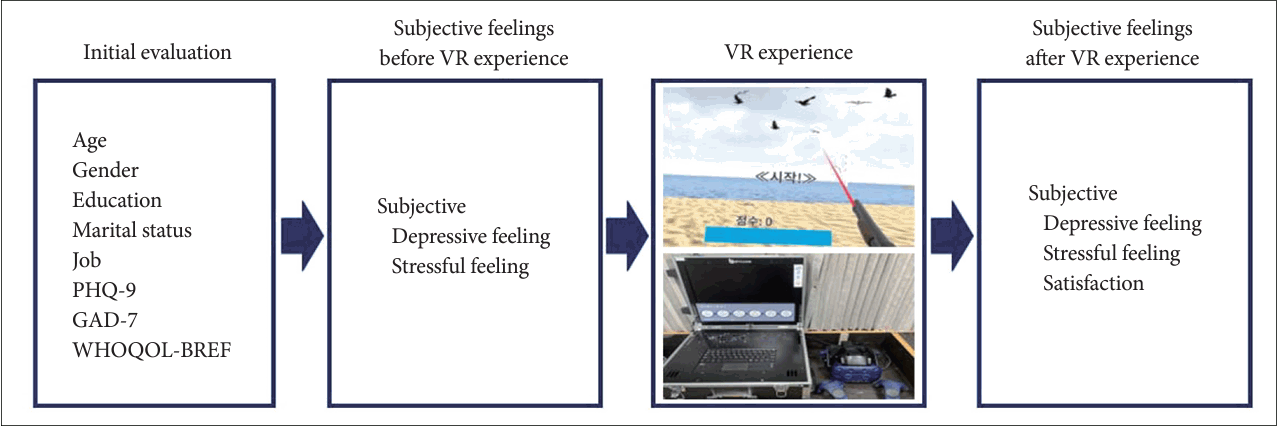1. Thornicroft G, Tansella M. Components of a modern mental health service: a pragmatic balance of community and hospital care: overview of systematic evidence. Br J Psychiatry 2004;185:283–290.


2. Parcesepe AM, Cabassa LJ. Public stigma of mental illness in the United States: a systematic literature review. Adm Policy Ment Health 2013;40:384–399.

4. Keyes CL. Promoting and protecting mental health as flourishing: a complementary strategy for improving national mental health. Am Psychol 2007;62:95–108.


6. Delibas DH, Erdogan E. Effects of a psychoeducation program on disease burden, depression, and anxiety levels in relatives of psychotic patients in a community mental health center. Perspect Psychiatr Care 2022;58:940–945.


8. Van Citters AD, Bartels SJ. A systematic review of the effectiveness of community-based mental health outreach services for older adults. Psychiatr Serv 2004;55:1237–1249.


11. Salehi E, Mehrabi M, Fatehi F, Salehi A. Virtual reality therapy for social phobia: a scoping review. Stud Health Technol Inform 2020;270:713–717.
12. Elphinston RA, Vaezipour A, Fowler JA, Russell TG, Sterling M. Psychological therapy using virtual reality for treatment of driving phobia: a systematic review. Disabil Rehabil 2023;45:1582–1594.

16. Kim DR, Park JH, Lim HJ, Shin MJ, Lee YH, Moon ES. The effect of bio-signal-based virtual reality smart mental care programs on the mental health and quality of life of middle-aged and older adults. J Korea Aging Friendly Ind Assoc 2022;14:41–51.

17. Lim HJ, Kim K, Moon E, Kim DR, Park JH, Shin MJ, et al. Difference in cognitive performance in virtual reality–assisted mental health promotion program according to groups clustered based on mental health. Mood Emot 2022;20:43–51.

18. Valmaggia LR, Latif L, Kempton MJ, Rus-Calafell M. Virtual reality in the psychological treatment for mental health problems: an systematic review of recent evidence. Psychiatry Res 2016;236:189–195.

19. Conner NO, Freeman HR, Jones JA, Luczak T, Carruth D, Knight AC, et al. Virtual reality induced symptoms and effects: concerns, causes, assessment & mitigation. Virtual Worlds 2022;1:130–146.

20. Park S, Lee G. Full-immersion virtual reality: adverse effects related to static balance. Neurosci Lett 2020;733:134974


22. An JY, Seo ER, Lim KH, Shin JH, Kim JB. Standardization of the Korean version of screening tool for depression (Patient Health Questionnaire-9, PHQ-9). J Korean Soc Biol Ther Psychiatry 2013;19:47–56.
23. Spitzer RL, Kroenke K, Williams JB, Löwe B. A brief measure for assessing generalized anxiety disorder: the GAD-7. Arch Intern Med 2006;166:1092–1097.


24. Lee SH, Shin C, Kim H, Jeon SW, Yoon HK, Ko YH, et al. Validation of the Korean version of the Generalized Anxiety Disorder 7 self-rating scale. Asia Pac Psychiatry 2022;14:e12421.

25. Cohen S, Kamarck T, Mermelstein R. A global measure of perceived stress. J Health Soc Behav 1983;24:385–396.


26. Hong GR, Kang HK, Oh E, Park Y, Kim H. Reliability and validity of the Korean version of the Perceived Stress Scale-10 (K-PSS-10) in older adults. Res Gerontol Nurs 2016;9:45–51.


27. Skevington SM, Lotfy M, O’Connell KA, WHOQOL Group. The World Health Organization’s WHOQOL-BREF quality of life assessment: psychometric properties and results of the international field trial. A report from the WHOQOL group. Qual Life Res 2004;13:299–310.

28. Min SK, Lee CI, Kim KI, Suh SY, Kim DK. Development of Korean version of WHO Quality of Life Scale Abbreviated Version (WHOQOL-BREF). J Korean Neuropsychiatr Assoc 2000;39:571–579.
30. Carl E, Stein AT, Levihn-Coon A, Pogue JR, Rothbaum B, Emmelkamp P, et al. Virtual reality exposure therapy for anxiety and related disorders: a meta-analysis of randomized controlled trials. J Anxiety Disord 2019;61:27–36.


31. Gerardi M, Cukor J, Difede J, Rizzo A, Rothbaum BO. Virtual reality exposure therapy for post-traumatic stress disorder and other anxiety disorders. Curr Psychiatry Rep 2010;12:298–305.


32. Gorini A, Pallavicini F, Algeri D, Repetto C, Gaggioli A, Riva G. Virtual reality in the treatment of generalized anxiety disorders. Stud Health Technol Inform 2010;154:39–43.

35. Head D, Isom M. Age effects on wayfinding and route learning skills. Behav Brain Res 2010;209:49–58.


36. Gorini A, Mosso JL, Mosso D, Pineda E, Ruíz NL, Ramíez M, et al. Emotional response to virtual reality exposure across different cultures: the role of the attribution process. Cyberpsychol Behav 2009;12:699–705.


37. Shirazi F, Nasab NZ, Jaberi A. Comparing the effects of virtual reality and home chair-based exercises on balance, daily living activities, and loneliness among older adults with balance disorders. Res Gerontol Nurs 2023;16:33–42.


38. Rose V, Stewart I, Jenkins KG, Tabbaa L, Ang CS, Matsangidou M. Bringing the outside in: the feasibility of virtual reality with people with dementia in an inpatient psychiatric care setting. Dementia (London) 2021;20:106–129.




